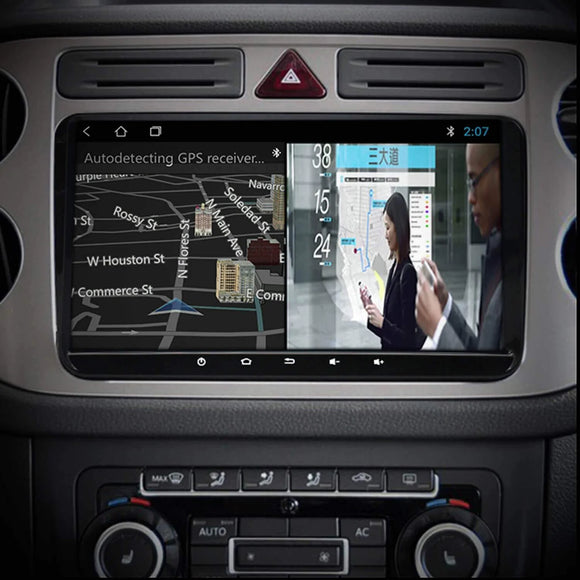
Some tips about Car Multimedia
Tip1: Use high-quality music files as your source material.
Yes, if you use higher compression, you can store more music files on your portable music player or phone, and they will sound fine when listened to through earbuds. However, compressing your music results in the loss of certain high- and low-frequency information, as well as some of the intricacies that make your music intriguing. Certain components of a song may sound off (for example, "swishy" cymbals).
You can sense when something is lacking from an excellent automotive audio system. The use of higher-quality source material is an immediate benefit.When adding to your digital collection, don't use the default settings when producing files or purchasing digital music. Use the least amount of compression feasible. The greater the bit rate, the better your music will sound via the audio system in your automobile. Higher bit rates need more storage, but the benefit in sound quality may be well worth it.When streaming music, look into the settings on your favorite music app to improve the audio quality. You can alternatively utilize a higher-resolution streaming music provider, such as TIDAL or Qobuz. Simply keep in mind that streaming at a higher bit rate will consume more bandwidth.Purchase high-resolution music players.Find out more about high-resolution formats.
Tip2: Install a vehicle amplifier.
"What are the best car speakers for bass?" friends ask. My response is invariably, "An amplifier." That's because, no matter how fantastic your speakers are, adding more wattage will improve their performance (within their performance parameters, of course).A standalone amplifier will supply more pure power than any automobile radio, and the difference in sound quality will be night and day. Your system will sound better whether you listen to a Mahler symphony at a low volume or Metallica at maximum volume. An amplifier is required for excellent sound in your vehicle.
Tip3: Set your amp gains properly
Every day, our Tech Support team receives calls from consumers who are perplexed as to why their new car audio system sounds so poor. The most serious issue? The majority of consumers believe that the gain control on their new amplifier regulates the volume level. Naturally, they turn it all the way up, which leads to disastrous results. The gain control regulates the amount of input signal that enters the amplifier. When you turn it up too loud, you'll hear some unpleasant distortion.Turn your receiver's volume dial about 3/4 of the way up to maximum level, then increase your amp gain until you hear distortion. Back it off a little and you're good to go. Every amplifier manufacturer will have distinct recommendations, so consult your handbook for the best approach to set the gain on your new amplifier.
Tip4: A good crossover may significantly improve the sound of your system.
Many in-dash receivers now have frequency filters that may be used in conjunction with your preamp and speaker outputs. If you have a sub, utilize the high-pass filter on your radio to remove the low bass from your car's full-range speakers. You'll get more clean volume out of them, especially if you use the receiver's built-in power.Or perhaps your sub is quite powerful, but the bass is coming from behind you. Experiment with increasing or decreasing the crossover point on your low-pass filter to bring the bass up front with the rest of the song.Front and rear frequency filters on JL Audio's HD600/4 4-channel vehicle amplifier allow you to fine-tune the quality of your music.Many amplifiers use subsonic filters that reduce ultra-low bass below the human hearing range. Turn it on - your amp and subwoofer will operate cleaner without the subsonic muck. Additionally, the compression used to compile your audio files might cause a low-frequency sputtering sound in your subwoofers. This noise will be removed or reduced by your subsonic filter.
Tip5: Install a subwoofer and see what you've been missing.
I've installed a lot of vehicle audio systems, and I still like seeing that "Wow" moment when someone hears a sub for the first time in their car. A decent subwoofer will bring your music's bottom octave back into perfect balance, allowing you to hear familiar songs in a whole new light. A subwoofer will also relieve strain on your full-range speakers because you'll be listening to music with the stereo's bass control set to "0" rather than "+5".
I've installed a lot of car audio systems, and I still like watching that "Wow" moment when someone hears a sub for the first time in their vehicle. A good subwoofer will restore the bottom octave of your music to perfect balance, letting you to hear familiar songs in a whole new light. Because you'll be listening to music with the bass control set to "0" rather than "+5", a subwoofer will help reduce pressure on your full-range speakers.
Tip6: Build a better subwoofer box. Or buy one.
If you're making a sealed subwoofer box, ensure sure it's properly sealed. Air leaks can seriously impair your sub's performance. If you're using a ported box, make sure you're using the correct woofer. A sub built for a sealed box can be destroyed by pushing it aggressively in a ported enclosure. It's also critical to construct a box with the proper inner volume for the sub you've chosen. A mismatch might lead to poor performance or even a death.You can also avoid all of these issues by buying a premade enclosure that'll work with your subwoofer.


